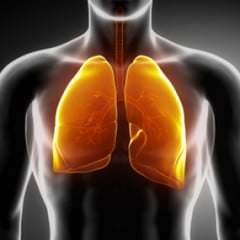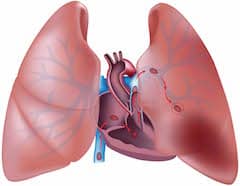Respirology
Episode 38: ENT Emergencies Pearls, Pitfalls, Tips and Tricks
Dr. Leeor Sommer who runs ENT hands-on workshops and Dr. Maria Ivankovic, lecturer extraordinaire on ENT emergencies discuss ENT Emergencies Pearls, Pitfalls, Tips & Tricks: Dr. Ivankovic's stepwise approach to managing epistaxis including the best local anesthetics, the use of ice to decrease nasal flow, who requires antibiotics, the management of hypertension in epistaxis, tranexamic acid for nose bleeds and managing posterior bleeds, tips for nasal and ear foreign body removal including the use of tissue adhesive, how to pick up and work up the dreaded Malignant Otitis Externa including key diagnostic pearls the best tests, sudden sensorineural hearing loss ('The Bells' Palsy of the Ear') including how to save a patient from losing their hearing, Epiglottitis including diagnostic clues and imaging findings, Pharyngitis work-up and treatment: Do we need to work-up and treat with antibiotics at all? & The Toronto Throat Score, Tips and Tricks for peritonsillar abscess drainage, Hereditary and ACE-inhibitor associated Angioedema presentations and management including the use of C1 Esterase inhibitors.
Episode 32: Whistler Update in Emergency Medicine Conference 2013
Whistler's Update in Emergency Medicine Conference 2013 in Whistler, British Columbia is U of Toronto's case-based interactive small group EM conference. There were so may great talks with amazing clinical pearls that I decided to wade through the 18 hours of audio recordings and packaged some of the key highlights for you here......EM Literature Review 2012 by Dr. Joel Yaphe, Neonatal Resuscitation Pearls by Dr. Nicole Kester-Greene, Fever of Unknown Origin by Dr. Shirley Lee, Improving Cosmesis in Wound Management by Dr. Maria Ivankovic, Hepato-biliary Disease by Dr. Sara Gray, & Pediatric Cardiac & Respiratory Cases by Dr. Donna Goldenberg.
Episode 31: LP, Spontaneous Pneumothorax and Ultrasound Guided Fracture Reduction
In this episode, Dr. Jordan Chenkin & Dr. Jamie Blicker discuss positioning, landmarking, and best technique for lumbar puncture, how to minimize post-LP headache and traumatic taps, as well as when CT head is not required prior to LP. They discuss the indications, contraindications, trouble-shooting and pros and cons of needle aspiration, small bore pleural catheter with Heimlich valve and large bore chest tube for the treatment of spontaneous pneumothorax. Dr. Chenkin presents an intriguing argument for why he uses ultrasound-guided fracture reduction routinely in the ED, and we end with a few tips and tricks using skin adhesive for some unorthodox indications.
Episode 24: COPD and Pneumonia
In this episode we have the continuation of our discussion on Respiratory Emergencies with Dr. Anil Chopra and Dr. John Foote. We discuss key clinical decisions in COPD assessment and management - how to assess for impending respiratory failure, how best to oxygenate the COPD patient, medication pearls and how best to approach intubating the COPD patient. We then review an approach to hemoptysis as well as tricks of the trade for managing massive hemoptysis. Many pearls of pneumonia work-up and management are detailed as well as how to make important disposition decisions.
Episode 21: Pulmonary Embolism
In this episode on Pulmonary Embolsim we have the triumphant return of Dr. Anil Chopra, the Head of the Divisions of Emergency Medicine at University of Toronto, and Dr. John Foote the CCFP(EM) residency program director at the University of Toronto. We kick it off with Dr. Foote's approach to undifferentiated dyspnea and explanation of Medically Unexplained Dyspea ('MUD') and go on to discuss how best to develop a clinical pre-test probability for the diagnosis of pulmonary embolism using risk factors, the value of the PERC rule, Well's criteria and how clinical gestalt plays into pre-test probability. Dr. Chopra tells about the appropriate use of D-dimer to improve our diagnostic accuracy without leading to over-investigation and unwarranted anticoagulation. We then discuss the value of V/Q scan in the workup of PE, and the pitfalls of CT angiography. A discussion of anticoagulation choices follows and the controversies around thrombolysis for submassive PE are reviewed.
Best Case Ever 8: Acute Dyspnea
Acute Dyspnea has a wide differential diagnosis from Metabolic Acidosis to Medically Unexplained Dyspnea. As a bonus to Episode 21 on Pulmonary Embolism and Acute Dyspnea, Dr. John Foote the CCFP(EM) residency program director at the University of Toronto presents his Best Case Ever related to an Acute Dyspnea presentation. In the related episode on Pulmonary Embolism we havet, with Dr. Foote, the triumphant return of Dr. Anil Chopra, the Head of the Divisions of Emergency Medicine at University of Toronto . We kick it off with Dr. Foote’s approach to undifferentiated acute dyspnea and explanation of Medically Unexplained Dyspea (‘MUD’) and go on to discuss how best to develop a clinical pretest probability for the diagnosis of pulmonary embolism using risk factors, the value of the PERC rule, Well’s criteria and how clinical gestalt plays into pretest probability. Dr. Chopra tells about the appropriate use of D-dimer to improve our diagnostic accuracy without leading to over-investigation and unwarranted anticoagulation. We then discuss the value of V/Q scan in the workup of PE, and the pitfalls of CT angiography. A discussion of anticoagulation choices follows and the controversies around thrombolysis for submassive PE closes the podcast. [wpfilebase tag=file id=384 tpl=emc-play /] [wpfilebase tag=file id=385 tpl=emc-mp3 /]







